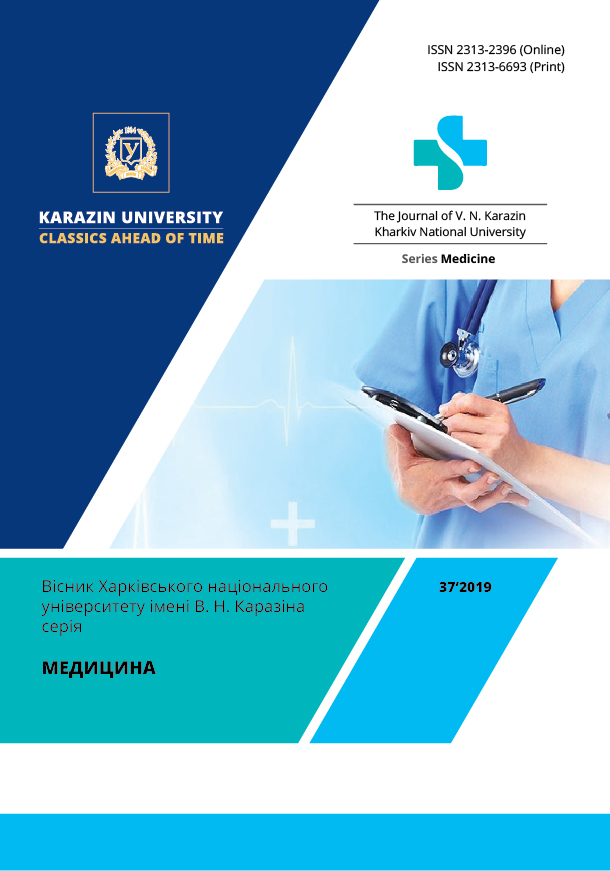The functional state of the system of immunological protection in traumatic disease in patients with an increased body mass index
Abstract
Introduction. An important reserve that provides adaptation processes in the immunoregulation system is the possibility of its various subsystems to redistribute structural and functional relationships between them. The approach from the perspective of systemic multivariate analysis will allow us to determine the main functional relationships that arise or are violated at different periods of traumatic disease in patients with an increased body mass index (IBMI) during polytrauma in the immune response as a whole. Aim. The aim of this study was to analyze the functional state of the immunological protection system for traumatic disease in patients with IBMI. Materials and methods The integral indicators of immunogenesis were determined using a systematic multivariate analysis on the basis of a dynamic study of 1344 complex immunograms in 224 patients with IBMI with polytrauma and a different initial value of BMI. Patients were divided into 3 groups: group I - 88 patients with BMI of up to 29.9 (26.1 ± 3.1); group II - 84 patients with BMI of up to 30.0 - 39.9 (35.2 ± 3.8 ), group III - 52 patients with BMI > 40.0 (46.2 ± 5.8). The study was conducted on the 1st, 3rd, 7th, 14th, 30th and 360th days from the moment of receiving a polytrauma. Results. In the functional state of the immune system as a whole, certain regularities were identified in patients with IBMI with polytrauma: impairment of immunoreactive processes was prolonged for 1 year or more from the time of polytrauma, regardless of BMI, their nature is regular and unidirectional, have periods of decline and increase in activity; the degree of damage, the ability of compensatory possibilities and the ability to restore them depending on BMI, since the initial deviations of the integral indicator are almost identical in all groups of patients; the immune mechanisms at all times are most determined by the state of the cell link and complement system for patients of I and III groups. Moreover, the development mechanism of secondary post-traumatic immunodeficiency, which is associated with the inclusion of extended T-suppression and a decrease in IgA concentration for more than 14 days, depends on BMI; a clear cooperation of cellular and humoral relationships, which is aimed at compensating for its consequences, was determined in patients of group II as well as active participation in the immune reactions of HLA-DR + lymphocytes as a delicate adaptation mechanism. The development of functional instability of the system occurred mainly due to the T-cell link a year after the case of polytrauma. Conclusion. Our analysis made it possible to prove objectively on mathematical models that traumatic disease is a long process. Clinical and pathogenetic aspects of immune disorders are beyond question and provide the basis for the application of the proposed treatment algorithms and changes in stereotypes regarding the treatment approach as a whole.
Downloads
References
Gray, S., Dieudonne, B. (2018). Optimizing Care for Trauma Patients with Obesity. Cureus. 10(7). P. 2130.
Winfield, R.D., Southard, R.E., Turnbull, I.R., Bochicchio, K., Reese, S., Freeman, B.D., Bochicchio, G.V. (2015). Angiotensin Inhibition Is Associated with Preservation of T-Cell and Monocyte Function and Decreases Multiple Organ Failure in Obese Trauma Patients. J Am Coll Surg. 221(2). P.486–494.
Kornblith, L.Z., Howard, B., Kunitake, R. (2015). Obesity and clotting: Body mass index independently contributes to hypercoagulability after injury. J Trauma Acute Care Surg. 78(1). P. 30–36.
Chuang, J.F., Rau, C.S., Kuo, P.J. (2016). Traumatic injuries among adult obese patients in southern Taiwan: a cross-sectional study based on a trauma registry system. BMC Public Health. 16. P. 275–279.
Majdan, M., Brazinova, A., Wilbacher, I., Rusnak, M., Mauritz, W. (2015). The impact of body mass index on severity, patterns and outcomes after traumatic brain injuries caused by low level falls. Eur J Trauma Emerg Surg. 41(6):651–656.
Premaor, M. O., Comim, F. V., Compston, J. E. (2014). Obesity and fractures. Arq Bras Endocrinol Metabol. 58(5). P. 470–477.
Dhungel, V., Liao, J., Raut, H., Lilienthal, M.A., Garcia, L.J., Born, J., Choi, K.C. (2015). Obesity delays functional recovery in trauma patients. J Surg Res. 193 (1). P. 415–420.
Osborne, Z., Rowitz, B., Moore, H., Oliphant, U., Butler, J., Olson, M., Aucar, J. (2014). Obesity in trauma: outcomes and disposition trends. Am J Surg. 207(3) P. 387–392.
The Journal of V. N. Karazin Kharkiv National University, series Medicine has following copyright terms:
- Authors retain copyright and grant the journal right of first publication with the work simultaneously licensed under a Creative Commons Attribution License that allows others to share the work with an acknowledgement of the work’s authorship and initial publication in this journal.
- Authors are able to enter into separate, additional contractual arrangements for the non-exclusive distribution of the journal’s published version of the work, with an acknowledgement of its initial publication in this journal.
- Authors are permitted and encouraged to post their work online prior to and during the submission process, as it can lead to productive exchanges, as well as earlier and greater citation of published work.




